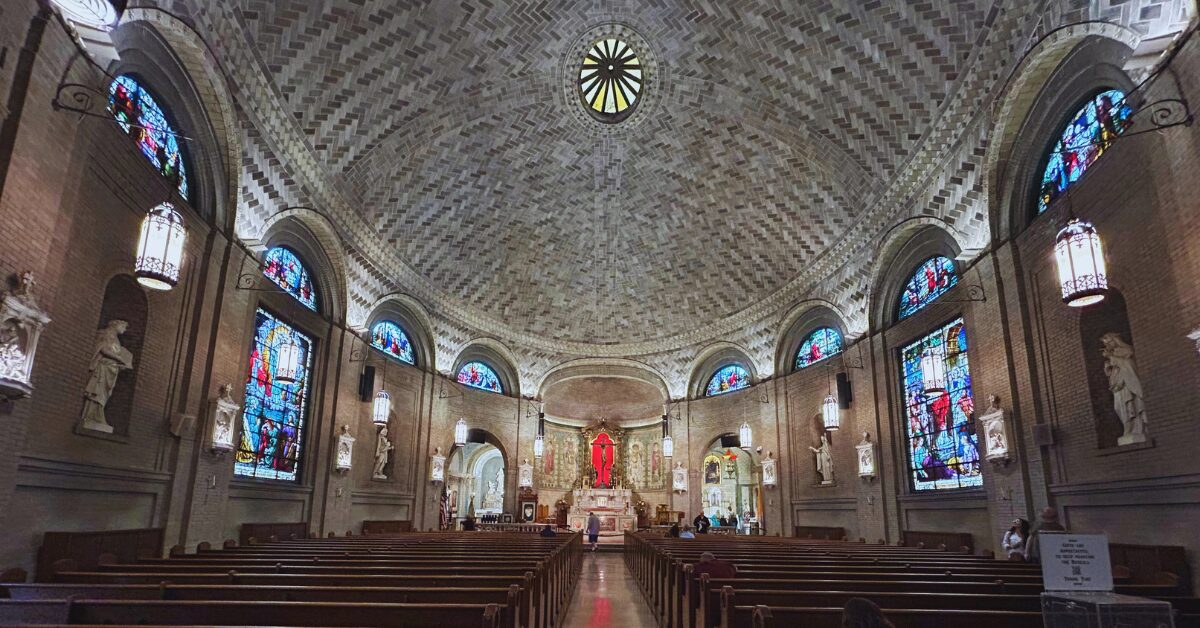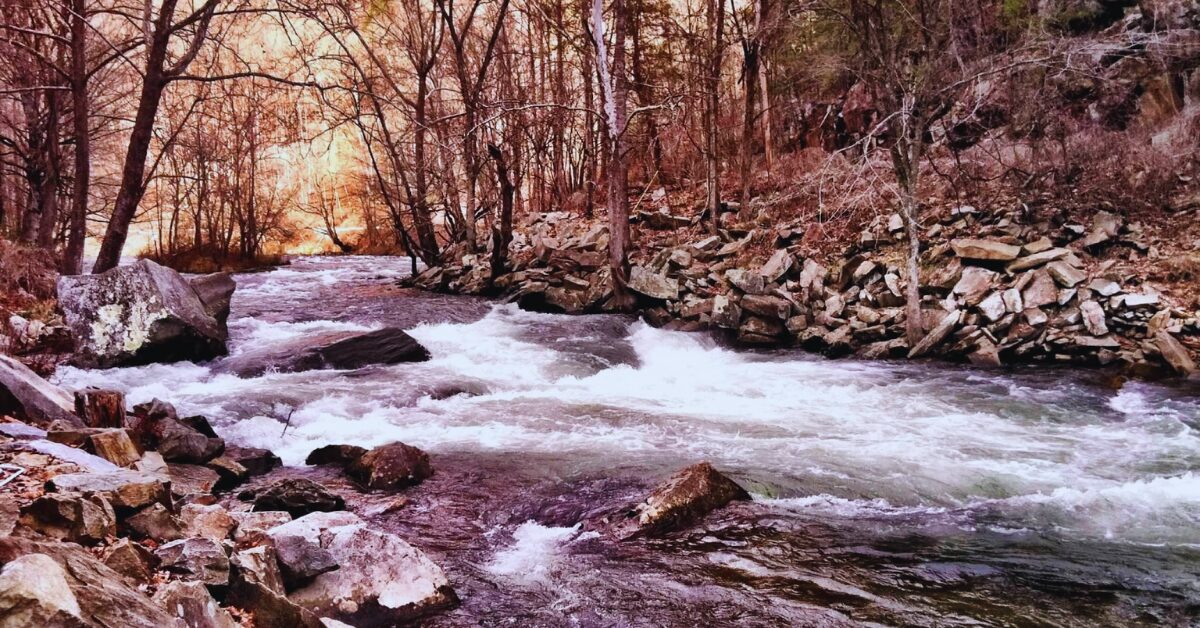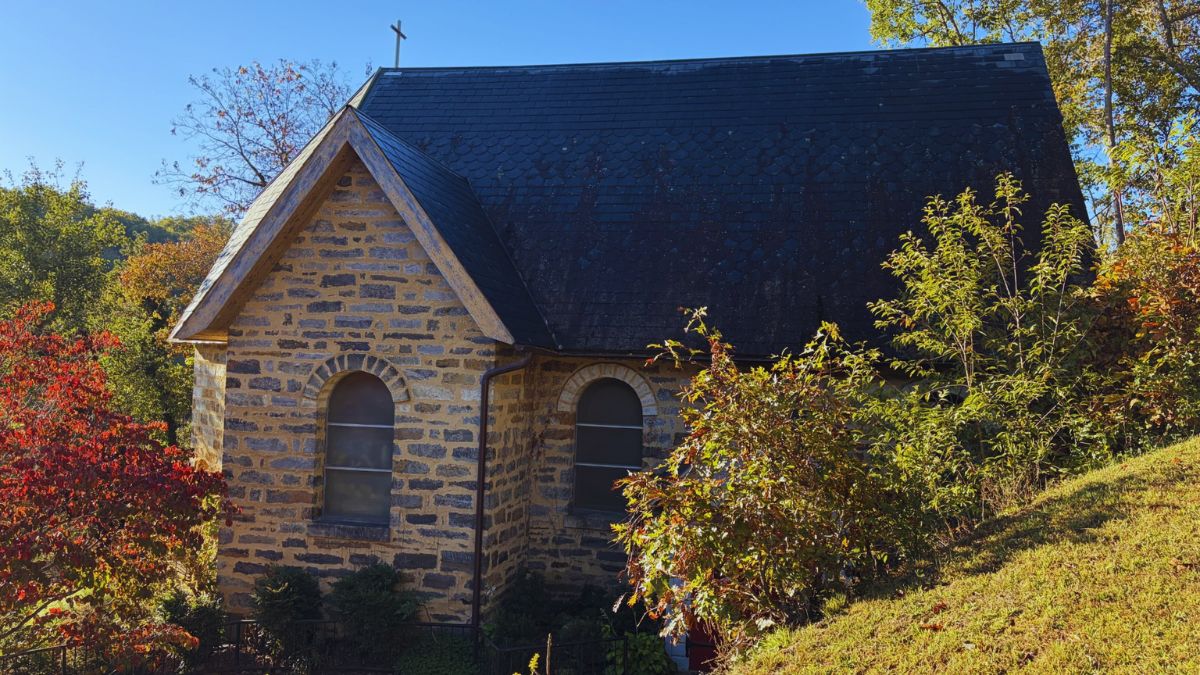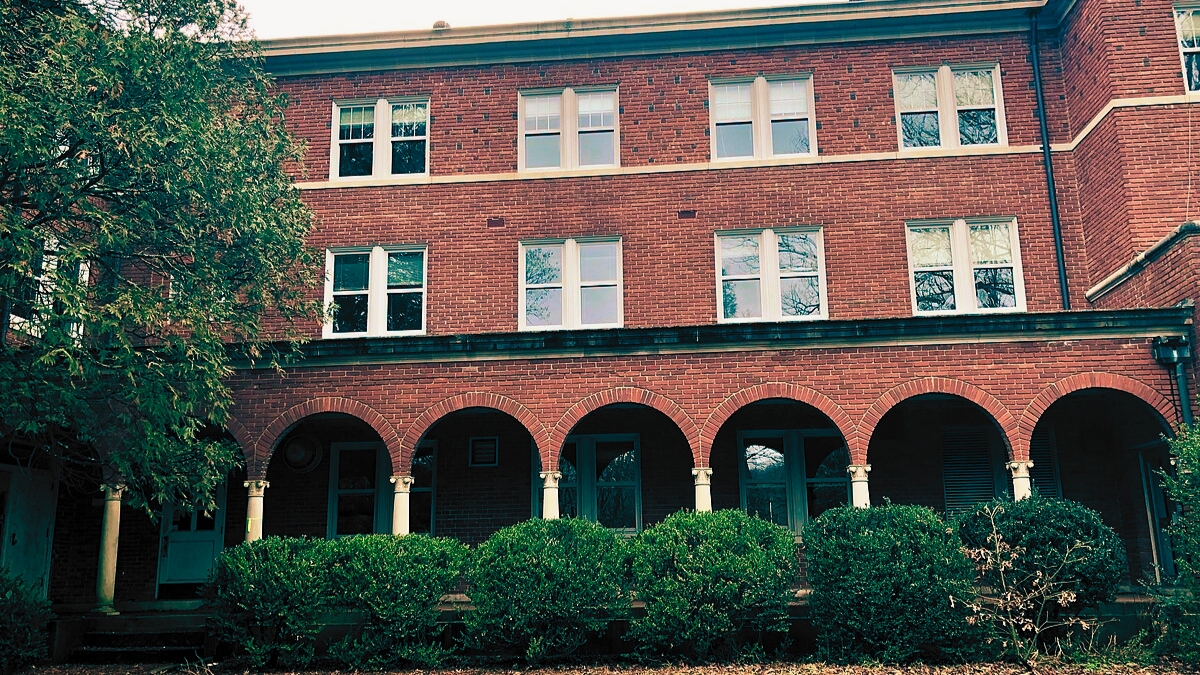EDITOR’S NOTE: Strangeville explores the legends, folklore, and unexplained history of Western North Carolina. From Cherokee mythology and Appalachian ghost stories to Bigfoot sightings and UFO encounters, the Blue Ridge Mountains have long been a hotspot for the strange and mysterious. Join us as we dig into the past and uncover the truth behind the region’s most curious tales.
ASHEVILLE, N.C. — In the heart of downtown Asheville, the Basilica of St. Lawrence draws visitors with its architectural beauty, engineering marvel, and a ghost story that has lingered for more than a century.
Spanish architect Rafael Guastavino designed the church in the early 1900s. Known for his tile-and-mortar construction method, he emigrated to the United States in 1881 and left his mark on more than a thousand buildings, including the Biltmore House in Asheville, Grand Central Terminal in New York City, and Carnegie Hall in Manhattan. The Basilica, which he called his masterpiece, stood unlike anything else in the region when construction began in 1905.
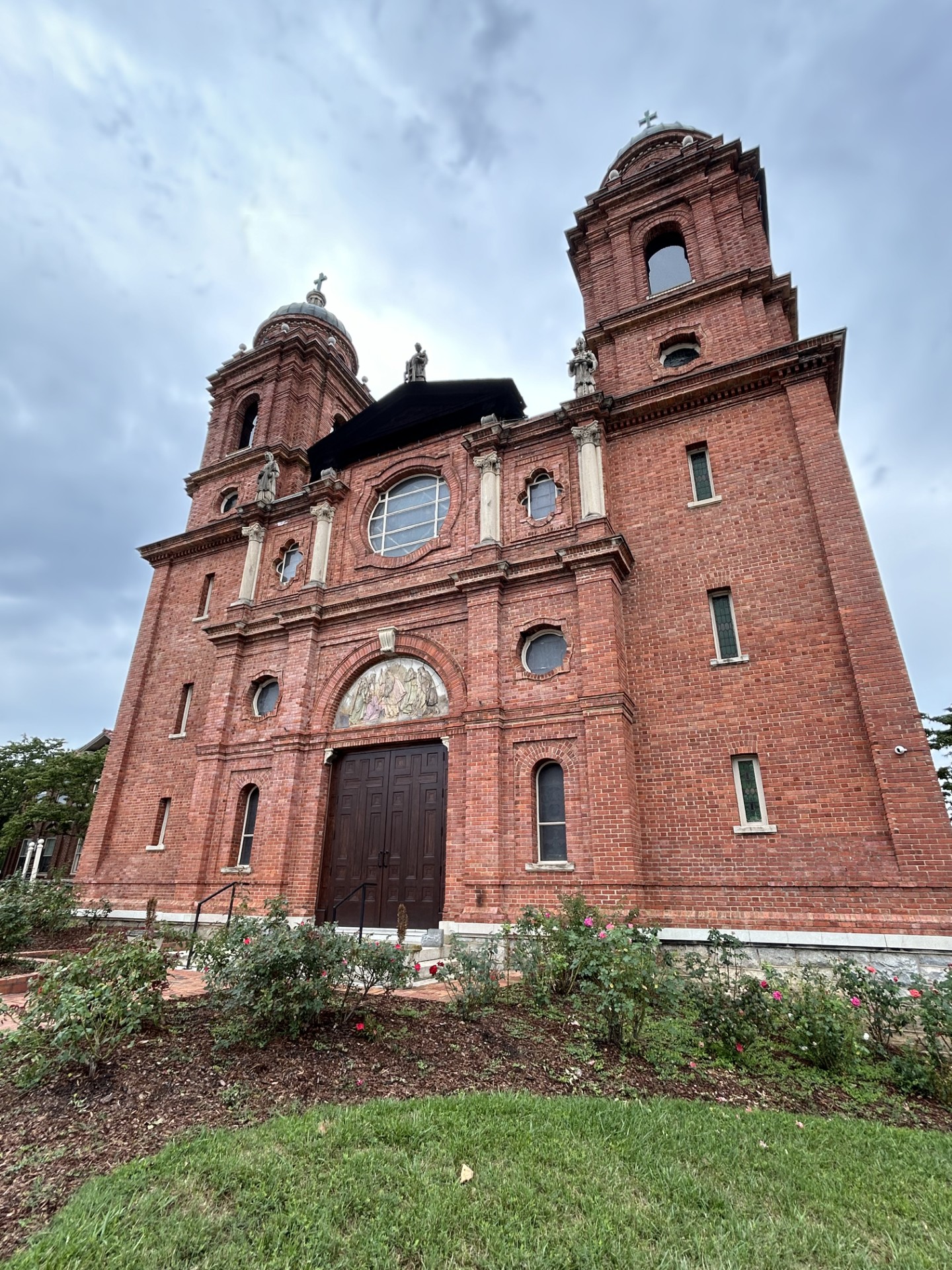
The structure contains no wood or steel. Every wall, ceiling, and support column was built using Guastavino’s signature system of interlocking tiles. The elliptical dome above the sanctuary spans 58 by 82 feet and is considered the largest freestanding dome of its kind in North America.
Guastavino funded the project, supplied the materials, and oversaw every detail. He died in 1908, just one year before the church’s completion. His son carried out the final phase of construction and honored his father’s wishes by entombing him inside the chapel of the church he built.
That’s where the haunting stories begin.
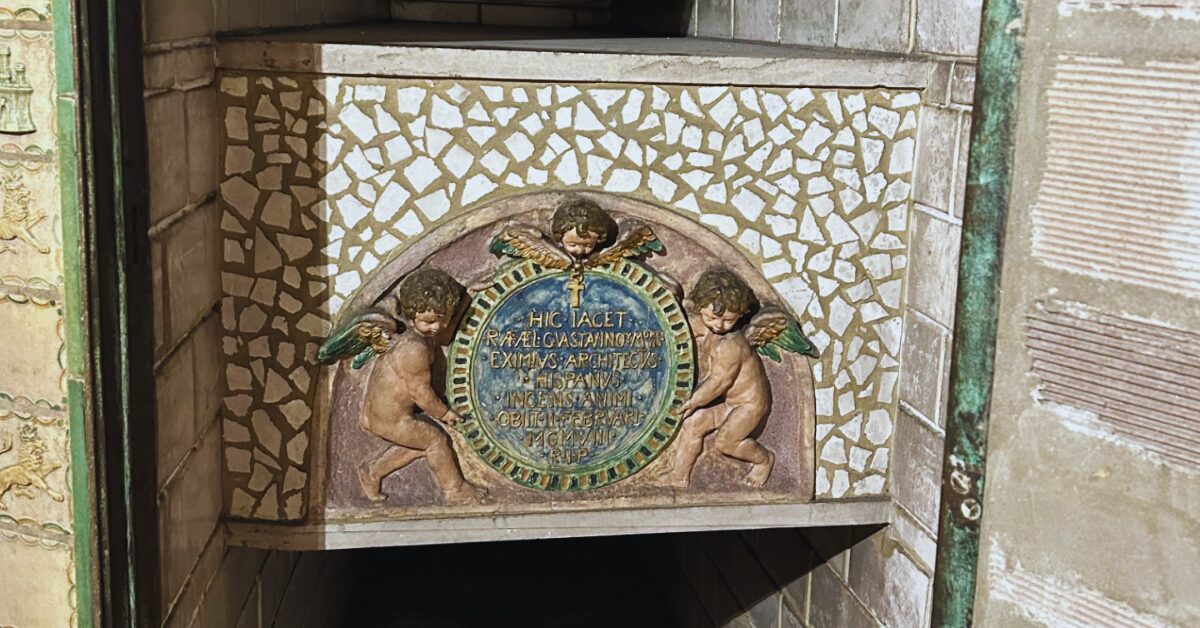
Some believe the architect was so deeply attached to the project that he chose to remain, watching over the building in death as he did in life.
Visitors and staff have long reported strange activity in the quiet hours before or after services. Cold spots have been felt in otherwise warm spaces. Lights flicker when no one is near the switches. Footsteps echo through the dome and sacristy, even when the church is locked and empty.
More than one person has claimed to see a shadowy figure near the chapel where Guastavino is buried. Some describe a man in dark clothing who vanishes before they can get a clear look. Others have heard the sound of a voice in prayer, only to find themselves alone in the room.
There is no documented history of violence or tragedy at the Basilica, but the reports continue. Most who feel a presence there describe it as peaceful, as if someone is watching over the space. Whether these stories are imagination, legend, or something more, they have become part of the church’s lasting legacy.
The Basilica of St. Lawrence remains an active parish and continues to welcome visitors, though hours have changed due to an ongoing restoration project. The church is now open for self-guided tours on the first and third Saturdays of each month, from 10 a.m. to 4 p.m. The renovation aims to preserve the structure’s historic architecture and intricate tilework for generations to come.
Visitors often come for the art, the craftsmanship, and the quiet sense of peace. A few come hoping to experience something beyond explanation.
In Asheville, beauty and mystery often go hand in hand. In the case of the Basilica, some believe the architect’s passion was so powerful, it left something behind.

